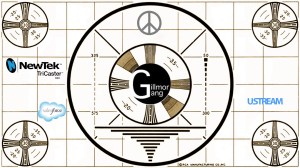When we imagine what it will be like when we exit the pandemic, what we’re really wondering is what we want from the digital transformation we’ve seen overturn our understanding of work and living safely. As much as we long for the days of the office and collaboration with our peers, some of that is about the mental space we achieve from the constant disruption of home life. Parenting has shifted from an arms-length affair to a therapeutic maintenance of burnout, over-saturation of news, and anxiety — and that’s just us. Our kids in many ways have already made the digital transition we are all now forced to endure.
They don’t see work from home as a choice because they’ve already defined it as how things work. The shift from meetings to asynchronous threads (texting only, please) has put work into a kind of binge streaming model. You don’t go to the movies — you check in to the situation the characters find themselves grappling with. Conversations overlap in group chats, solving existing problems while foreshadowing the next set. Overriding themes like what am I going to do in life and who are my real friends joust for interaction time.
Voice calls are fundamentally transactional. Video (FaceTime) is used for pitches and demos. And the flow is in both directions. Our kids want reassurance, a sense that wiser heads will prevail as we learn the rules of the new society. Parents want reassurance too, that they will be able to balance the competing needs of kids, grandparents, and the constant pressure of a notification grid filled with breaking news. Interruptions in this new environment are the single biggest cost of loss of focus and diminished productivity.
Turning off notifications often creates more problems than it solves. You trade protection from the immediate crisis for reduced ability to respond to a broader one. Answers to the next question prove more effective. The permissions and posting privileges of a messaging layer guide the information flow, bubble to the top, and anticipate the aggregate value of the channel in follows and subscriptions. The patterns of social metadata — @mentions, retweets, private messages, likes— can be separated from the content to prioritize the distribution of threads.
The appeal of the creator economy and its emerging suite of tools for disrupting traditional media is moving from personal to professional. Mom and pop businesses can project sophisticated services to evangelize, market, and fund growth of their products. The same contours of notification personalization become the valuable data streaming juggernauts like Netflix hoard to run their production and publishing businesses.
On this edition of the Gang, Frank Radice sees parallels to the television industry grappling with digital for the first time.
That’s exactly about the same time that NBC decided that they needed to get into digital. And we had this gigantic meeting in California with all the executives in one huge room with the doors closed and nobody was allowed to have their phone on them so that we could talk about what digital was going to be and what it was going to do and how we were going to use it and what we were going to make of it. And in the end, everybody walked out of there saying, you know, we don’t understand anything about this, but I’ll tell you, we know we need to be there. And I think a lot of it started that way.
The problem with transforming industries is that the collapsing business models are a habit that’s hard to quit. As Michael Markman remembers:
My friend Hardie Tankersley [colleague in the early days at Apple] predicted this a decade ago when he was working for Fox. And they said, ‘Yeah, we all know that. Just don’t bother us now. We’re still making money.’
This is the lesson the record companies learned the hard way, by waiting too long to absorb the Napster threat. Are newsletters and live streaming the tip of the spear to do the same to the media companies?
Michael adds a note of caution:
Zuckerberg did his own version of this. He’s using AR to give you the feeling you’re sitting in a room at a conference table with a bunch of other people. And I’m remembering back to my old time working for corporations. That was the worst part of work, sitting in a room at a conference table with other people.
As the Beatles say, la-la-la-la life goes on.
the latest Gillmor Gang Newsletter
__________________
The Gillmor Gang — Frank Radice, Michael Markman, Keith Teare, Denis Pombriant, Brent Leary and Steve Gillmor. Recorded live Friday, August 20, 2021.
Produced and directed by Tina Chase Gillmor @tinagillmor
@fradice, @mickeleh, @denispombriant, @kteare, @brentleary, @stevegillmor, @gillmorgang
Subscribe to the new Gillmor Gang Newsletter and join the backchannel here on Telegram.
The Gillmor Gang on Facebook … and here’s our sister show G3 on Facebook.


